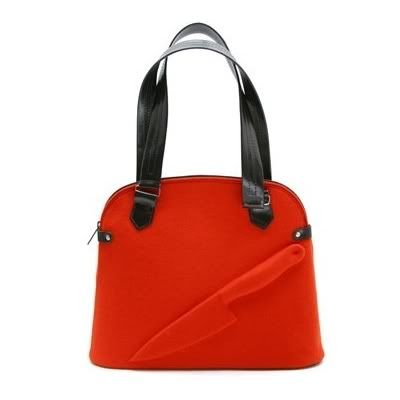-As a student studying design, I often create things as a reaction to a problem, which I try and find a solution for. After seeing the 'Guardian Angel Bags' and some of the products associated with the 'Safe' exhibition I started to question what the best method of deigning for anxiety is and realized that is in no way straight forward. Using the 'Guardian Angel Bag' as an example (see fig.1), if you look at this product at face value it can be seen to reinforce the idea that there is a danger, and you need this product to be safe, and therefore counterproductive. These bags are very much intended to be ironic; they are a social comment, laughing at people’s anxiety (or laughing in the face of danger).

Fig.1, Guardian Angel Bag
-A very real example of fear driven ethics could be religion. Fear of damnation or the apocalypse convincing people to worship. This topic recently collided with the advertising world when the British Humanist Association made a campaign for the sides of busses saying 'There's probably no God. Now stop worrying and enjoy your life.'
-It is no revelation that the media, television and film play a big part in the creation of fear (I often think back to when we were all going to get avian flu). Films of the Apocalyptic or dystopian fiction genre often try to push us towards changing our ethics. The film that comes to my mind is ‘The Day After Tomorrow,’ which had its heart in the right place – global warming awareness- but was interpreted as complete fear mongering due to its very “Hollywood” plot.
Here is a clip from the animated TV series ‘South Park’ parodying the film ‘The Day After Tomorrow.’
Sam Tripp
No comments:
Post a Comment
Note: only a member of this blog may post a comment.